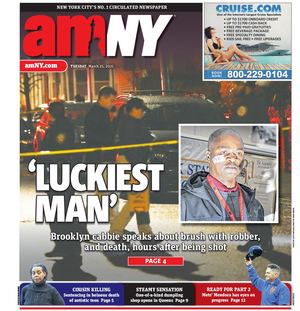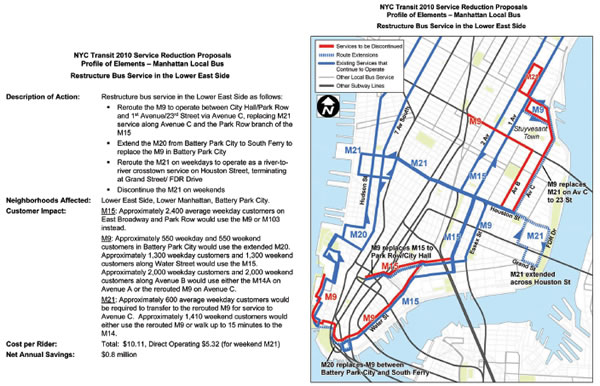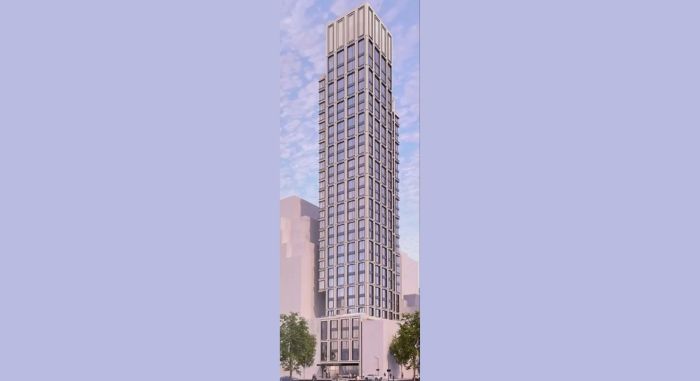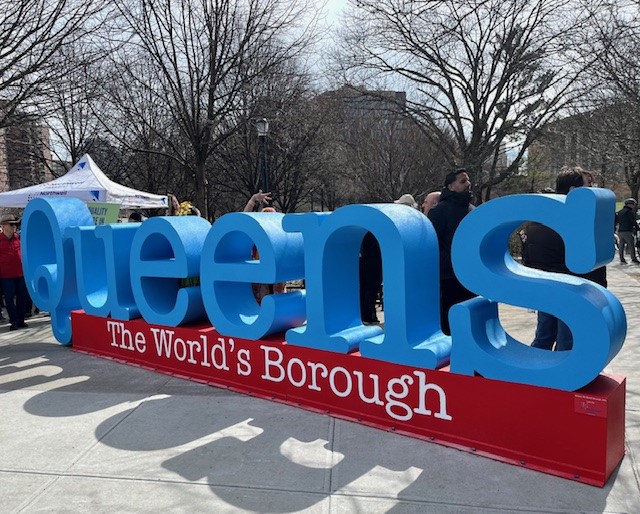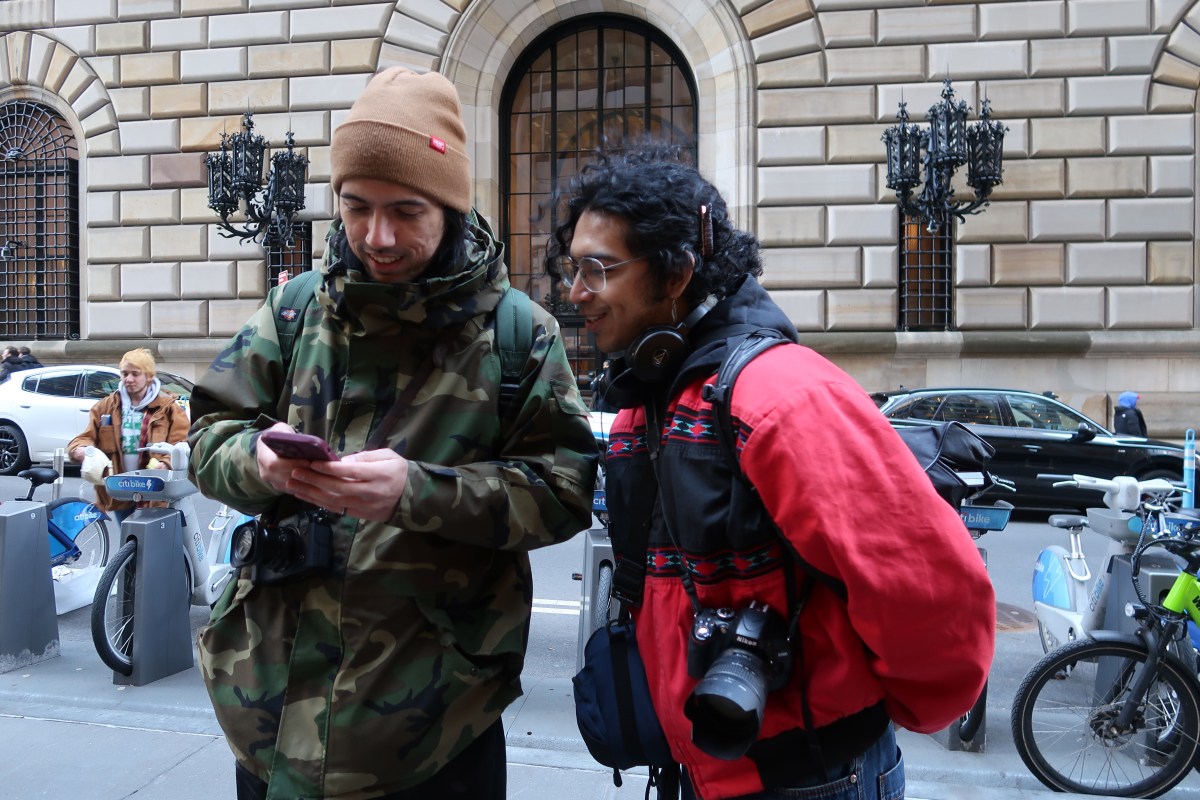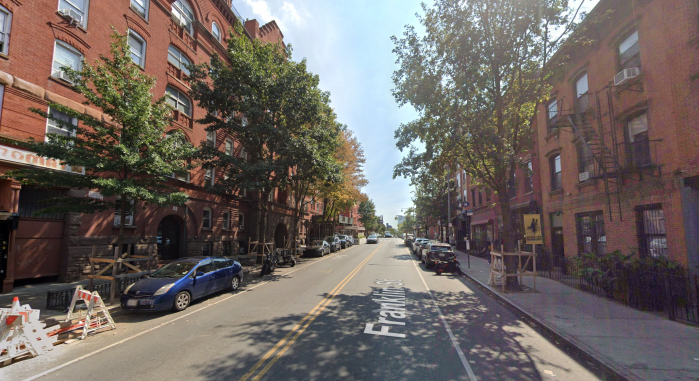By Julie Shapiro
The M22 bus will keep running between Battery Park City and the Lower East Side, thanks to a last-minute reprieve from the Metropolitan Transportation Authority, but Downtown will still see other bus and subway cuts.
The M.T.A. had planned to discontinue the portion of the M22 between City Hall and Battery Park City and stop all service on the route on weekends to save about $1 million a year. But after Downtown residents and elected officials protested at a public hearing earlier this month, the M.T.A. decided not to make such a drastic cut to the M22.
“I am absolutely delighted,” said Linda Belfer, chairperson of Community Board 1’s B.P.C. Committee. “To stop [M22 service] was an utterly ridiculous thing.”
However, the cuts planned for other Downtown lines, such as the M8 — the Eighth St. cross-town bus — are still, as of now, set to go into effect. Dubbed a “low-performing local bus route,” by the M.T.A., the M8 will see its weekend and overnight service eliminated. And Lower East Side bus routes are slated for a full-scale “restructuring” that will eliminate service in sections, including the M9, which runs up Avenue B and along 14th St. over to Union Square.
In general, Lower Manhattan will still see a dramatic impact from the $93 million in cuts the M.T.A. board approved last Wednesday to fill its nearly $800 million operating budget shortfall. Starting later this year, the M train will no longer run through Chinatown and the Financial District. And changes to other bus and subway lines — including the N/Q/R/W, M6, M8, M9, M15 and M20 — will also mean less service for Downtown.
The state Legislature could still come through with a rescue of the M.T.A. and avert some of these cuts, as happened last year, but M.T.A. spokesperson Aaron Donovan said he was not optimistic because the state is facing its own multi-billion-dollar deficit.
Ro Sheffe, chairperson of C.B. 1’s Financial District Committee, said he hopes the change affecting the M train is just a scare tactic to get Albany politicians to pay up and won’t actually happen.
“It’s a very, very bad thing for the Financial District,” Sheffe said of the service cut. “With all the reconstruction and new development that has hobbled the Financial District, the last thing the neighborhood needs is less connectivity with the rest of the city… . I can’t believe the M.T.A. would make such a decision.”
The M train will continue to run from Middle Village in Queens, through Brooklyn, and over the Williamsburg Bridge on weekdays. But at Essex St. on the Lower East Side, rather than running Downtown to Canal St., City Hall, Fulton St. and Broad St., the M will head up to Broadway-Lafayette and follow the stops the V train currently makes along Sixth Ave. and into Queens. The V train will be discontinued, and the M train, now with a brown logo, will take on the V’s orange color.
About 100,000 people a day will be negatively impacted by the change, either through longer wait times or an added transfer, the M.T.A. said. The cut will save the M.T.A. $4 million a year.
James Yolles, spokesperson for the Downtown Alliance business improvement district, said that since 90 percent of those who work in Lower Manhattan take public transportation or walk to work, the M cut would hit commuters especially hard.
“It’s unfortunate that they’re cutting service down here because this area is so reliant on public transportation,” he said.
Straphangers waiting for the J/M/Z at Fulton St. during a recent evening rush hour were not pleased when told of the changes. Several picked the exact same five-letter verb to describe the cut.
“I think it sucks,” said Anna Rusinek, 38, a financial research specialist who lives in Queens. “It’s definitely inconvenient for me.”
Rusinek and many others estimated that their commutes to Lower Manhattan would take an extra 10 to 15 minutes, since their one-seat rides will soon require a transfer to the J/Z trains at Essex St.
Even those who usually take the J train were concerned, saying the J is already full at rush hour and won’t have room to pick up the extra M passengers at Essex St.
“We pay a lot of money, and we’re still going to be delayed,” Anthony Timberlake said as he stepped onto a J train at Fulton St. Over his shoulder, as the doors closed, he added, “There’s a curse.”
One line that appeared blessed last week was the M22, the only bus in Manhattan that the M.T.A. initially planned to cut but decided last week to save. The M22 will still lose overnight service between 1 a.m. and 5 a.m. on weekdays and between 9 p.m. and 7 a.m. on weekends, which will affect an estimated 225 people a week, but thousands of riders will benefit from the continued daytime service, the M.T.A. said.
Ricky Chen, a Battery Park City resident who was taking the M22 to City Hall recently, was surprised to hear the M.T.A. had even considered cutting the bus.
“That’s good news,” he said of the restoration. “If they can keep it, that would be great.”
One of the politicians who fought for the M22 to be restored was Councilmember Margaret Chin, who represents all the neighborhoods along the bus’s route between the World Financial Center and Corlears Hook Park.
“I love that bus,” Chin said at a Lower Manhattan Marketing Association breakfast last Thursday, “because it really is the bus that connects Lower Manhattan from Battery Park City to the Lower East Side.”
With reporting by Josh Rogers and Lincoln Anderson
